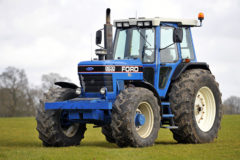Coventry Transport Museum visit
Posted by Chris Graham on 26th April 2022
As well as being designated City of Culture in 2021, Coventry is also home to a genuinely excellent transport museum, as Bob Weir discovers.
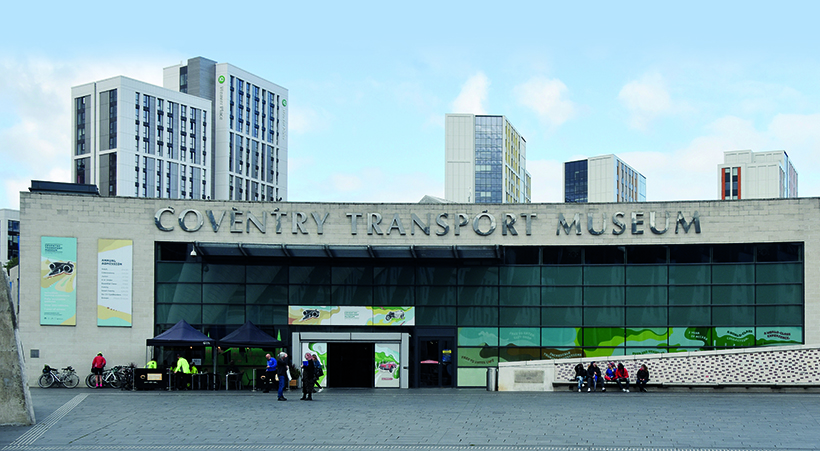
The Coventry Transport Museum is situated right at the heart of the city.
During its industrial heyday, Coventry was a force to be reckoned with. In recent years, the city has reinvented itself as a hub for the service industry. Coventry’s recent spell as UK City of Culture gave it access to funds to improve its arts facilities and infrastructure. It also hosted a series of events celebrating local culture.
Coventry Transport Museum is internationally acclaimed and holds one of the world’s largest collections of British road transport exhibits. The collection has designated status and includes around 250 cars, commercial vehicles and buses. In addition, there are more than 100 motorbikes and 350 cycles. The museum is also well-known for its extensive archives.
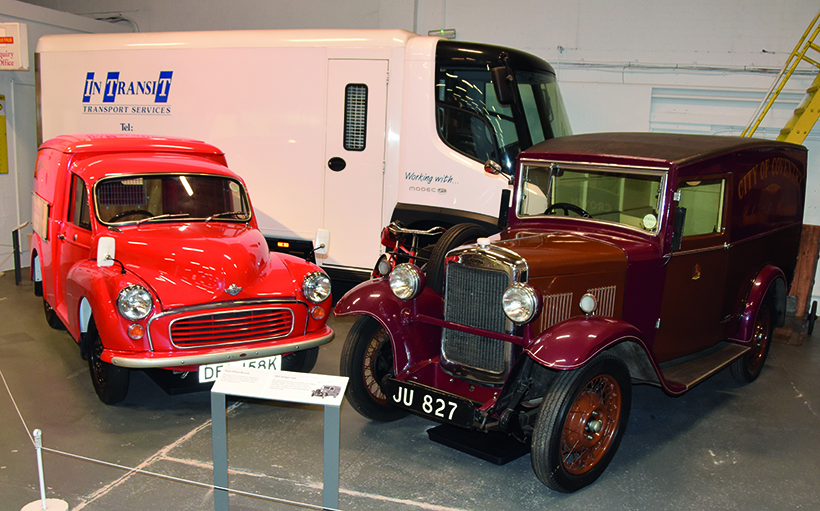
Light commercial vehicles were once the bread and butter of British manufacturing. The late production Morris Minor van is a familiar classic, and the rare 1931 Singer van was found in a barn in poor condition and restored by museum staff.
Located in the heart of the city centre the museum is one of the top attractions in the Midlands, and usually draws a healthy crowd. The collection can be divided into two categories; the vehicle exhibits and display materials, and documents and photographic records.
The museum was originally opened in 1980 to highlight the city’s rapidly expanding transport collection. This had previously been housed in the Herbert Museum and Art Gallery, until it began to run out of space. The museum’s current fleet of vehicles is acknowledged to be one of the finest in the world and is believed to be the largest in public ownership.
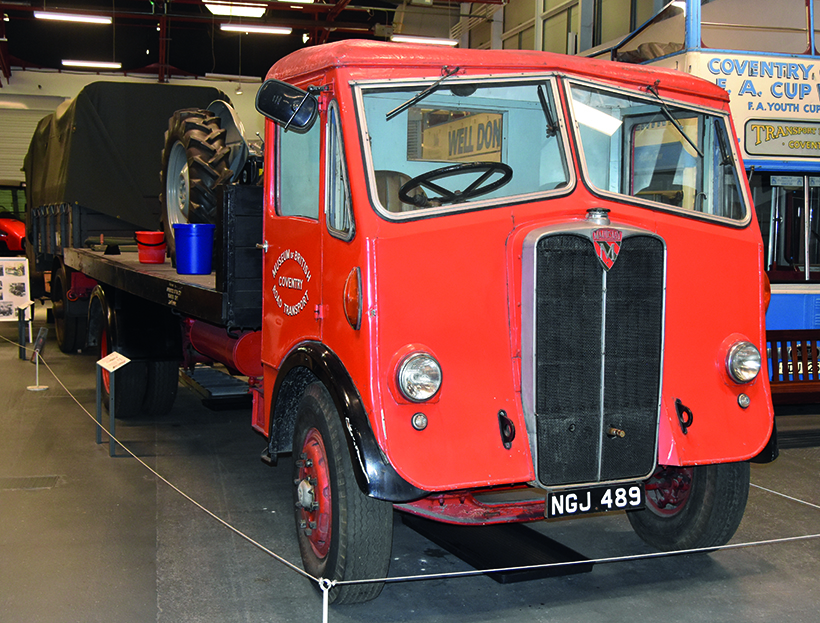
This Maudslay Monarch was built in 1954. The lorry is mostly made with AEC parts and was originally equipped with a box body by Marshall Motor Bodies. It started life as a stores van with the GPO, before being restored as a flatbed by the Coventry Engineer’s Department Apprentice Training Scheme.
The first exhibits were acquired in 1937 when local enthusiast Samuel Bartleet gifted the city his personal collection of cycles. Mr Bartleet was originally born in Australia, before moving to the UK. He was reputed to be a man of many talents, including a former journalist and amateur cycle racer. He published ‘Bartleet’s Bicycle Book’ in 1931, which covered the history of cycling and featured a description of the 70 machines in his collection.
The introduction of motorised vehicles in the late nineteenth century, transformed British society. Horse-drawn transport had been the main mode of travel for centuries but disappeared almost overnight. Following the end of the Great War the motor industry continued to expand during the 1930s, as a succession of new companies entered the market.
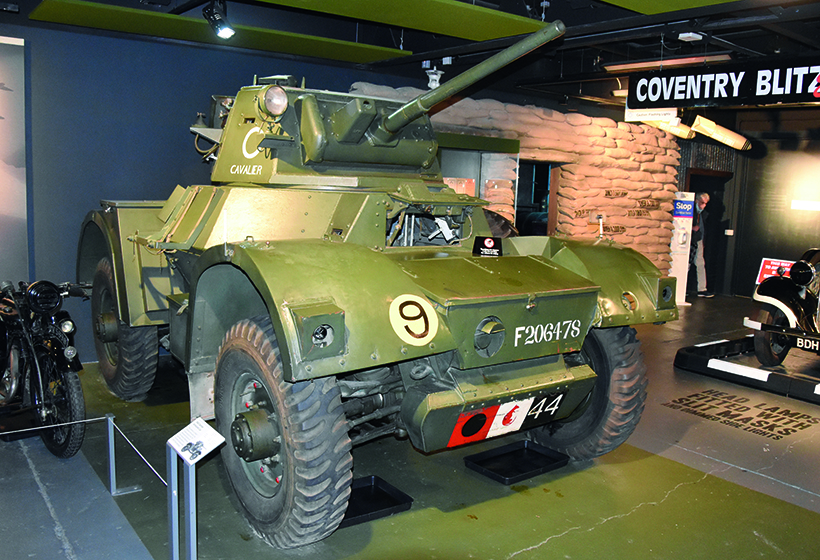
During the Second World War, many of Coventry’s motor manufacturers temporarily switched production over to military vehicles. Daimler specialised in making armoured cars. The museum’s Mark 1 is powered by a modification of their four litre car engine, with an eye-watering fuel consumption of only 4mpg. Each wheel is fitted with independent suspension, and permanent 4WD. The vehicle is also equipped with two steering wheels. One is for conventional driving, and a second mounted in the turret is used by another crew member when steering in reverse.
By the beginning of the Second World War, Coventry was home to some of the most important motor vehicle manufacturers in the UK, including several household names. Unfortunately, it was also a tempting target for the German air force (Luftwaffe) and was forced to endure several bombing raids that destroyed large parts of the city. The raid on the night of November 14th, 1940, was particularly severe when more than 500 people lost their lives.
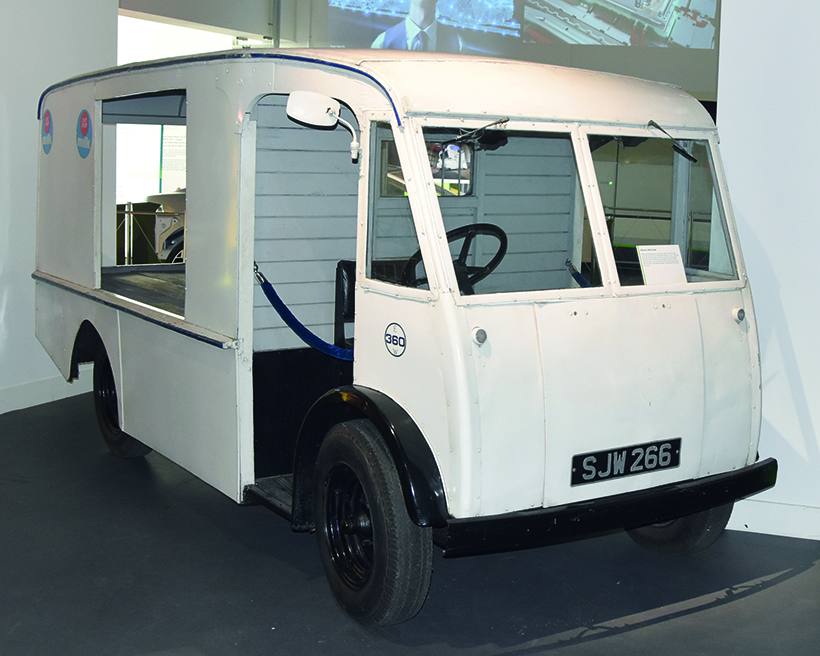
The business end of a 1956 electric milk float. These were a common sight up until the end of the twentieth century, when the steady growth of large supermarkets spelled the end for most door delivery milk rounds. This float was made by Midland Electric Vehicles in Leamington Spa and entered service with the Midland Counties Dairy in Wolverhampton. It was eventually retired in 1976.
Normal service for the transport collection was resumed at the end of hostilities, and the first cars were added to the stable in 1952. As the UK economy slowly recovered in the 1950s, public interest in motor vehicles began to grow. Regular exhibitions in Coventry started in earnest in 1960 and were soon attracting a lot of interest. By this time, the collection had come on leaps and bounds and in addition to its superb fleet of historic vehicles, the museum had also acquired an extensive collection of archive material, documents, books, photographs and automobilia.
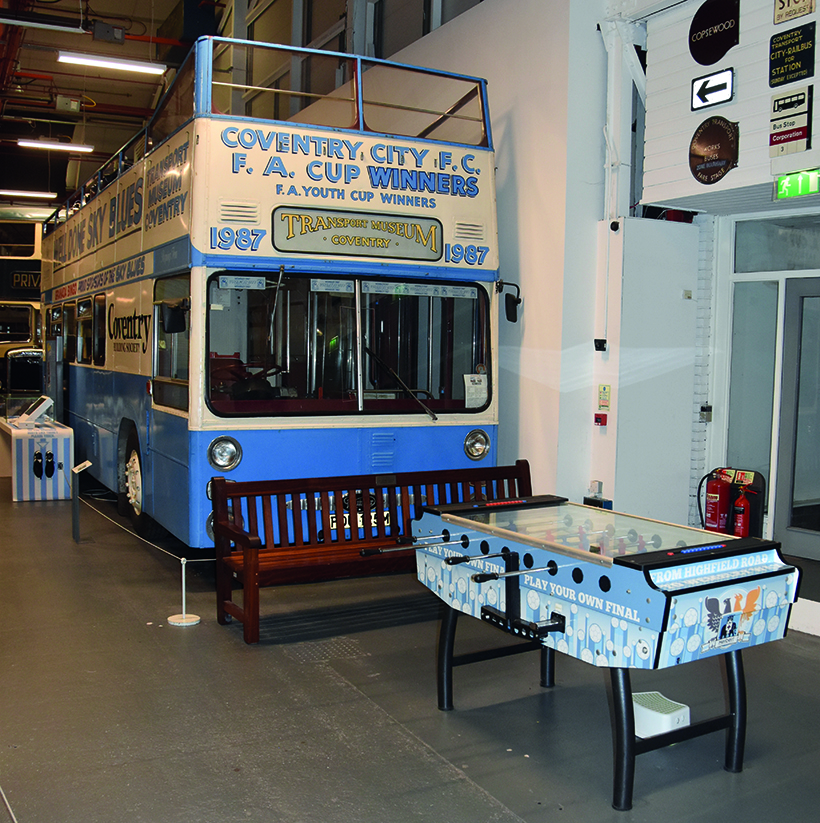
This 1973 Daimler Fleetline bus was the last of its kind and was delivered to Coventry Corporation. The bus was used in the victory parade after Coventry City won the FA Cup in 1987.
Most of the exhibits were gifted by private donors, and the museum is still seeking to add to its collection. This includes a growing number of commercial vehicles, reflecting on Coventry’s transport heritage.
Because of demands on space, not all the exhibits are on display at the same time. However, there are more than enough vehicles on show in any given period to satisfy the appetite of most enthusiasts. The museum is particularly busy during school holidays and is a firm favourite with children of all ages.
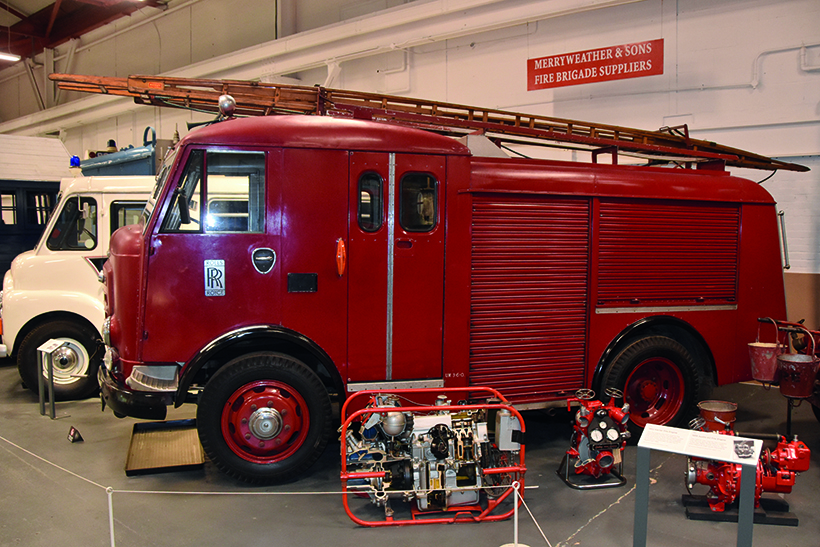
A 1952 Karrier fire appliance. Karrier was originally the brand of Clayton & Co, which built commercial vehicles at their factory in Huddersfield. In 1934, it became part of Rootes Group, who were taken over by Chrysler in 1967. The Karrier name was dropped in the early 1970s.
Museums are constantly having to re-invent themselves to compete in a challenging market. Coventry Transport Museum is no exception, and the site was extensively re-developed in 2015. A dozen of the museum’s 14 galleries were completely transformed at a cost of £8.5 million. The project was funded by the Heritage Lottery Foundation, European Development Fund, Biffa Award and Garfield Weston. Culture Coventry is the trust responsible for managing the museum.
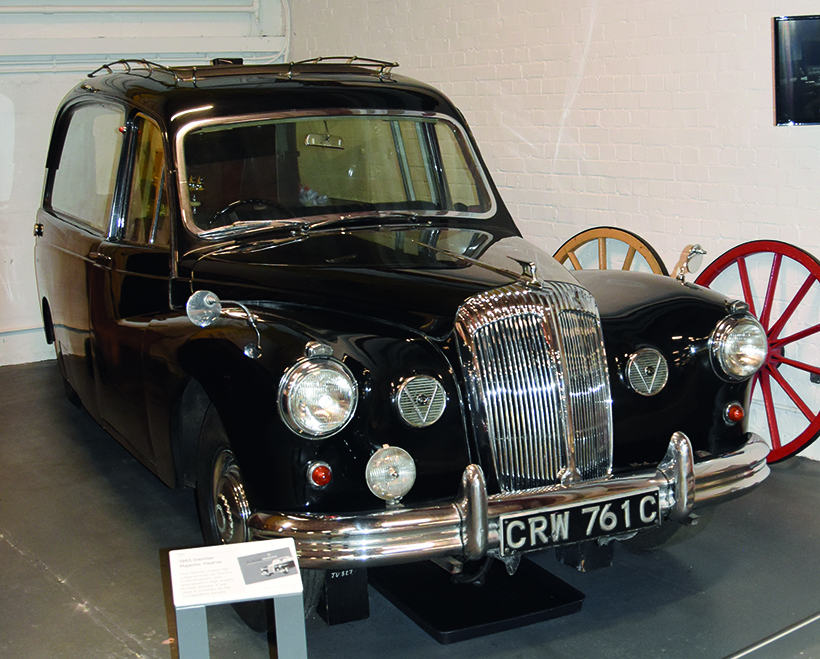
The 1965 Daimler Majestic hearse adds a sombre mood to proceedings. The body was made by Startins of Birmingham, who specialised in high-quality funeral vehicles. It was used in Coventry by the Cooperative Society.
The museum prides itself in helping local schools and colleges, and their dedicated Learning Team conducts training sessions for pupils of all ages. The museum is recognised as a Children’s University learning destination and is an ideal setting for education outside the classroom. The hands-on sessions cover a wide range of curriculum activities. In addition, the museum is also a perfect place for a family day out. The school holiday programmes offer several activities for families to enjoy, including various crafts and quiz trails for a small charge.
A lot of the restoration work is done on site by the museum’s staff. This includes the Maudslay lorry that served during the Great War.
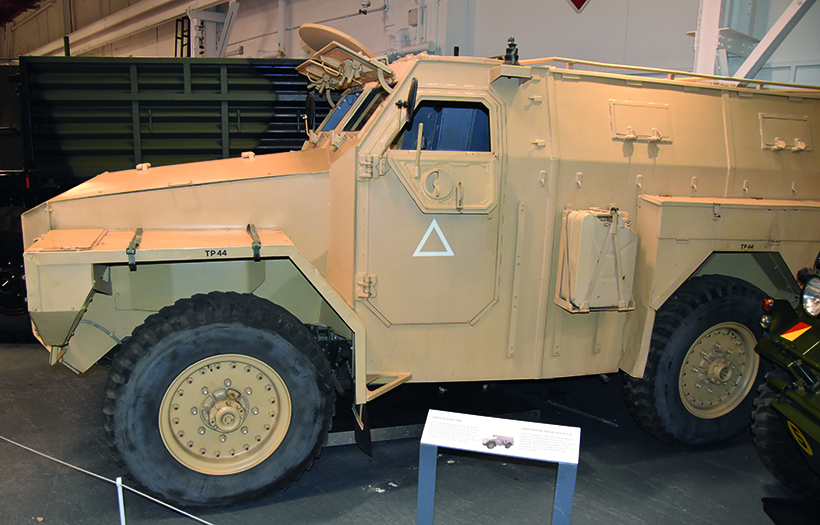
The Humber Pig was used by the British Army from the 1950 until the early 1990s. It was also used by RUC (Royal Ulster Constabulary) and became a familiar site on our televisions during the Northern Ireland disturbances.
The Maudslay Motor Company was based in Coventry and had been founded in 1902 by Cyril Charles Maudslay, great-grandson of the well-known engineer Henry Maudslay. He was joined by his cousin Reginald Walter Maudslay, who left to start the Standard Motor Company.
In its early days, the company produced internal combustion engines, progressing onto cars and commercial vehicles. Like many of its competitors, it also built lorries for the Army during the Great War.
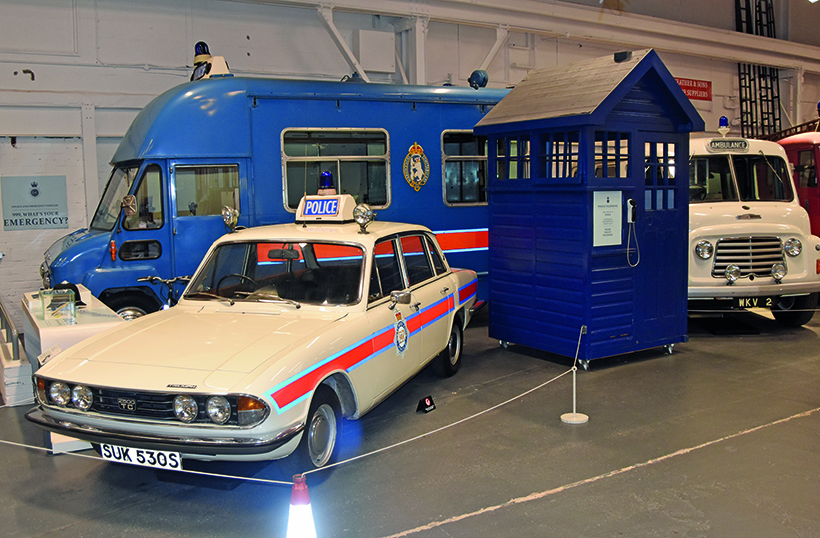
‘Boy’s in Blue’ on parade. The 1963 Commer Police Mobile Incident Control Room was used by the Warwickshire Police Force from 1963 to 1986.
Maudslay concentrated on making commercial vehicles at the end of hostilities, including an advanced low-level bus chassis that proved to be very popular. A significant amount of production was transferred to the Great Alne works (Castle Maudslay) during the Second World War, where the company produced military equipment.
During the post-war years Maudslay continued to make lorries and coaches, using different types of chassis. The company merged with AEC (Associated Equipment Company) and Crossley in 1948. The Maudslay name was eventually phased out, although the Castle Maudslay plant continued to produce axles and other components.
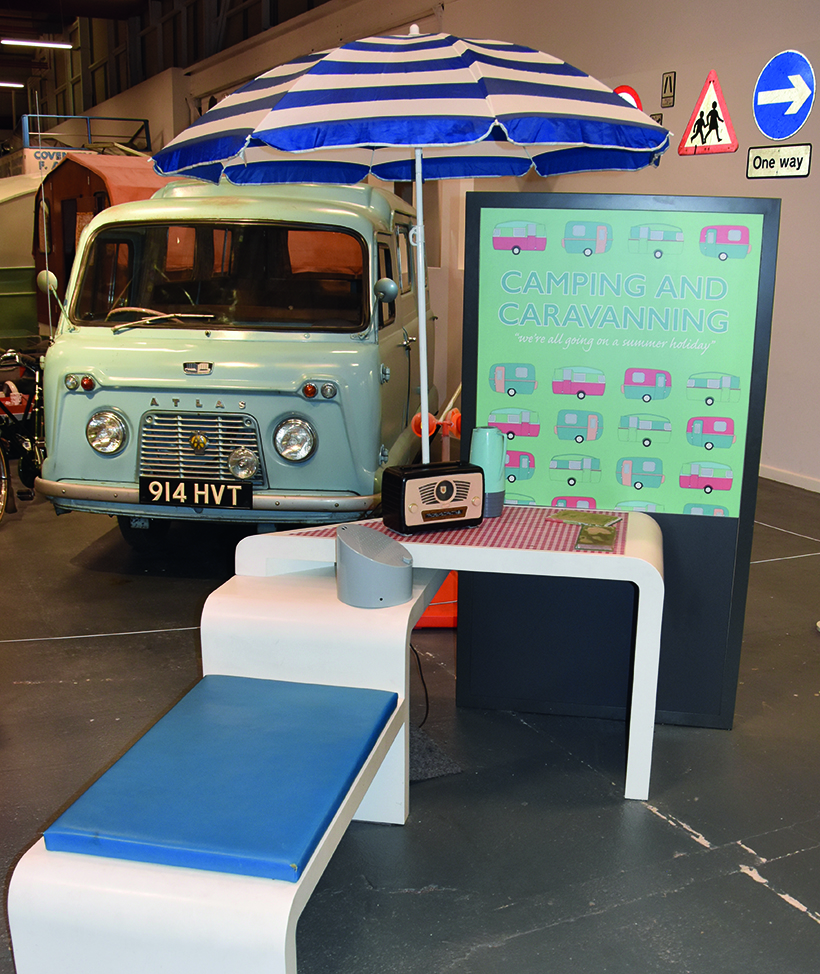
Mobile camping holidays were very popular in the UK in the 1950s and early 1960s. Most British motor manufacturers were keen to jump on the bandwagon, and Standard produced their camper based on the Atlas van. This 1959 model is in the same condition as when the museum acquired the vehicle, which had been languishing in a disused garage.
“The vehicle is a 1916, three-ton ‘subsidy’ lorry,” said Collections Technician Chris Strawbridge. Chris has been with the museum now for several years. “They were called ‘subsidy’ lorries because of a government scheme that allowed would-be owners to buy a lorry at a subsidised rate, on the proviso that the government could commandeer the vehicle on the outbreak of war.
“The lorry’s early history is a bit of a grey area, but we know it didn’t see service on the Western Front. A lot of military transport was destroyed in France, and this is probably why the Maudslay is the last known survivor of its type.
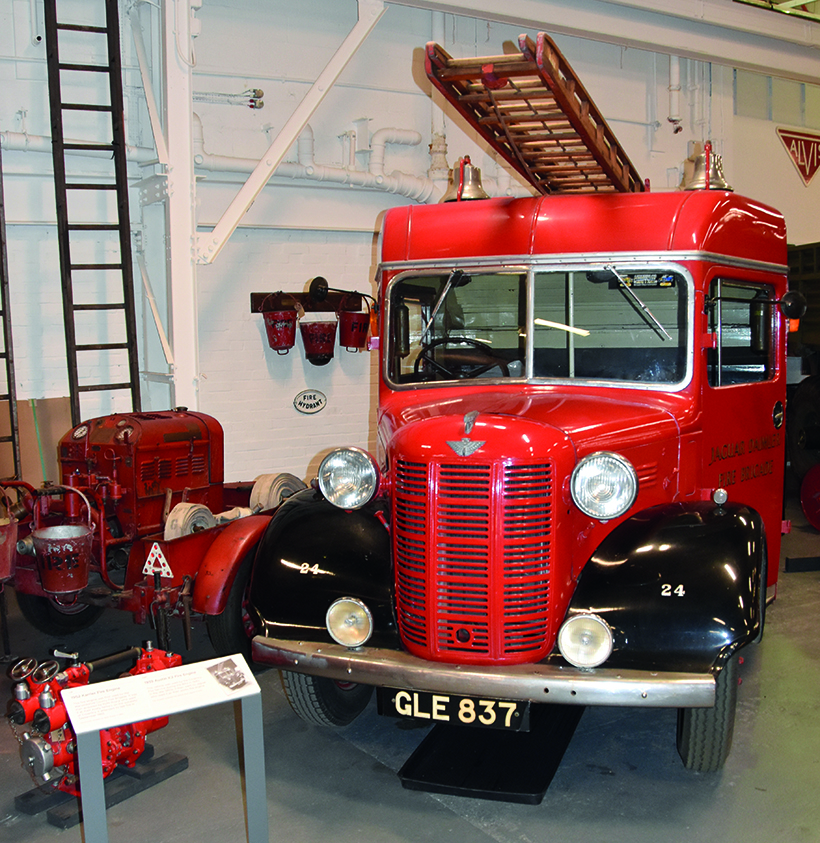
This Austin K4 fire appliance was used internally by the Jaguar Daimler fire brigade.
“For some reason, our lorry was sent to Scotland and was used for General Purpose duties at Montrose Airfield. This was the first Royal Flying Corps operational aerodrome, and it was established on the 26th of February 1913 following instructions by the First Lord of the Admiralty, Sir Winston Churchill. The aerodrome’s purpose was to defend the Royal Navy bases at Rosyth, Cromarty, and Scapa Flow.
“When the lorry was decommissioned, it was used for many years on the travelling fairground circuit. The lorry was then stood down due to mechanical failure and ended up in a farmyard near Crathes to the west of Aberdeen. The Maudslay was then used as a makeshift holiday home for many years.
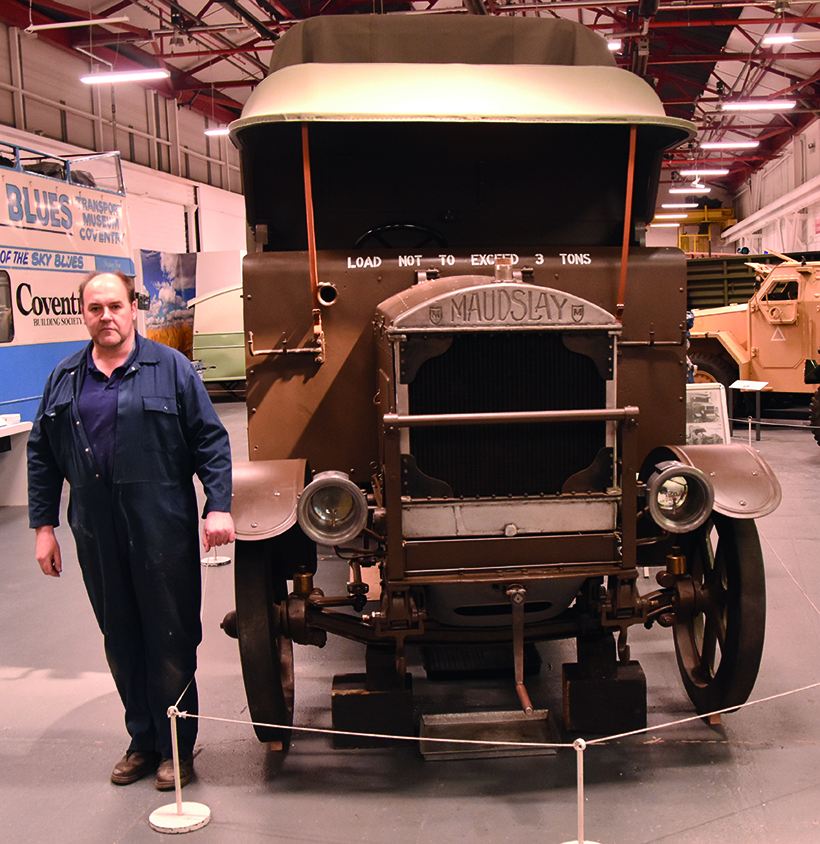
Chris Strawbridge and his Great War Maudslay military lorry. The vehicle is believed to be the last survivor of its type.
“I’ve been told that the children used to pretend to start the engine using the starting handle, which is one of the reasons why the engine never seized up! Coventry Transport Museum finally acquired the lorry in 2000. The vehicle was in a bit of state and needed a full restoration
“The lorry was completely stripped down and some parts remade. We did some of the work ourselves but also used local contractors, and a specialist engine firm down in Guildford. I did most of the bodywork, and the lorry is now roadworthy.”

This 1968 Alvis Stalwart was an amphibious vehicle and could carry a five-ton load.
In today’s environment, attractions like the Coventry Transport Museum, need to constantly ring the changes. The facility has a full programme of ongoing events, and the diary for 2021 included Our Future Moves. The exhibition runs through to the summer of 2022 and includes demonstrations of the latest technology.
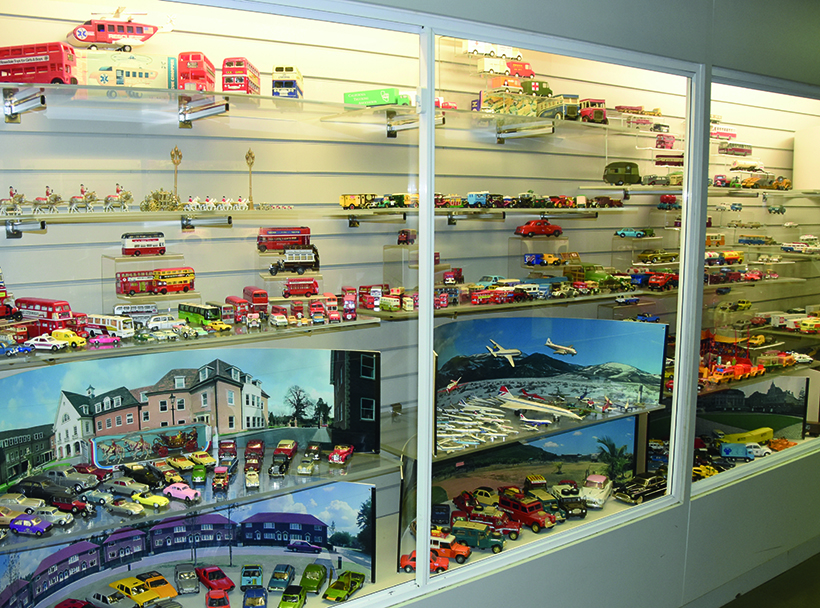
A fascinating collection of model vehicles that will delight enthusiasts of all ages!
The interactive exhibition explores how future cities may look and includes pioneering developments in transport and technology. It also shows how they could affect the environment and the way we live. The exhibits highlight the Midlands pioneering work and features autonomous vehicles and one-person submarines.

The Daimler Dingo Scout car was in production between 1940 and 1944. More than 6600 were made and this 1944 example is believed to have seen action during the latter stages of the war.
This feature comes from the latest issue of Heritage Commercials magazine, and you can take advantage of a brilliant, money-saving subscription simply by clicking HERE




